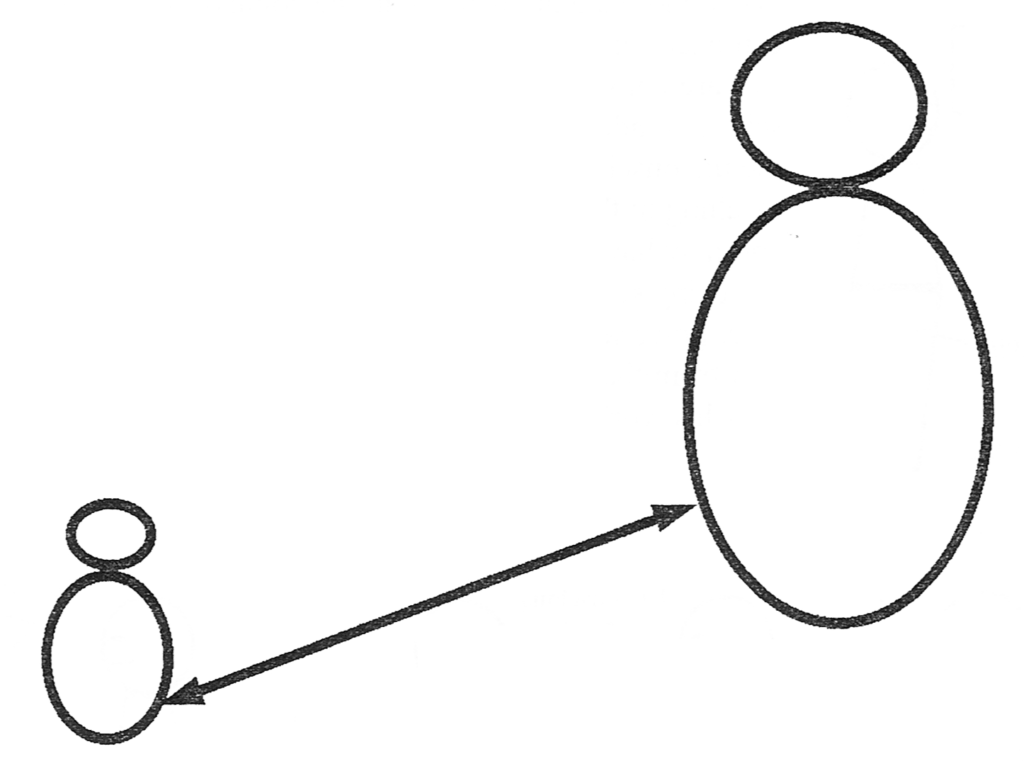Outrage has become a defining quality of our times. This rocket fuel ignites our screens, fills our conversations more, and real action less. Social media feeds are filled with fiery debates, political polarity sharpens, and even minor grievances can quickly escalate into full-blown clashes. It seems we’ve fallen into an angry existential loop: we’re enraged by a world we feel powerless to change, yet our outrage only appears to strengthen the forces we oppose. So, what drives this self-fulfilling, life-sucking cycle, and how can we step back from its grip?
When was the last time your outrage led to real-world action? Beyond sharing posts or venting online, have you put your energy into tangible change—like volunteering, supporting a cause financially, or initiating honest conversations with people who think differently? If not, ask yourself: Is your outrage serving a purpose, or is it just serving itself?
Podcast Discussion

The Nature of Outrage
At the heart of this dynamic lies a powerful feedback loop: the more we engage with outrage, the more we seek reasons to feel it. This phenomenon, sometimes called self-fulfilling outrage, describes how our chronic need to feel outraged influences our perception. We become primed to see insults and threats everywhere, with even minor slights now fueling our next wave of indignation.
And fueling this cycle are algorithms designed to keep us engaged. By curating our feeds to show us stories and posts that align with our emotional state, algorithms fan the flames of outrage by showing us content that intensifies our reactivity. By continually serving us content that confirms our biases and ignites strong responses, algorithms ensure we remain in a constant state of arousal, locking us in a self-sustaining cycle.
The result? Outrage generates a temporary sense of validation, of feeling alive and involved. But the longer we ride the wave, the more we find ourselves locked in a negative spiral, caught between feeling disempowered and continually seeking emotional release. Our psyche craves this intense stimulation, even if it leaves us feeling depleted and disconnected.
Outrage is not action. Do the work that needs to be done in silence; let the results be your noise.
The Feedback Loop of Outrage
At the heart of this dynamic lies a powerful feedback loop: the more we engage with outrage, the more we seek reasons to feel it. This phenomenon, sometimes called self-fulfilling outrage, describes how our chronic need to feel outraged influences our perception. We become primed to see insults and threats everywhere. Small slights, which might once have passed us by, are now fuel for our next round of outrage. Our feeds, curated by algorithms, amplify this tendency by serving us the stories and posts that align with our emotional state, making outrage self-sustaining.
Here’s the twist: outrage generates a temporary sense of validation, of feeling alive and involved. But the longer we ride the wave, the more we find ourselves locked in a negative spiral, caught between feeling disempowered and continually seeking emotional release. Our psyche craves this intense stimulation, even if it leaves us feeling depleted and disconnected.
Do not be content with showing anger; let your actions reflect your values.
The Cost of Self-fulfilling Outrage
Outrage becomes our default state, shaping our relationships, decision-making, and physical health. Neuroscientists have shown that chronic anger triggers the release of cortisol and adrenaline, stress hormones that keep the body alert. While these hormones can help in real crises, they’re toxic when perpetually active, leading to fatigue, compromised immunity, and burnout.
Psychologically, the effects are equally corrosive. Outrage blinds us to nuance, pushing us toward black-and-white thinking, where we categorize people and issues as entirely good or entirely bad. We lose the capacity for empathy, curiosity, and open-ended dialogue—qualities that could defuse the outrage cycle. By perpetually seeking the next outrage fix, we divert energy from meaningful action, locking ourselves in a loop that, paradoxically, leaves the issues we care about unresolved.
A person in a chronic state of anger is not just angry; they are in a perpetual state of self-division, mentally cut off from curiosity, empathy, and openness. Anger narrows our perception, creating a psychological prison where we see only enemies and lose sight of the complexity and humanity in ourselves and others.
Carl Jung

Ego’s Role in Perpetuating Outrage
In the Diamond Approach®, the ego’s self-referential nature is central to this dynamic. In many ways, outrage extends the ego’s need to assert itself—to assert a position and declare, “I am right, and you are wrong.” This righteousness feeds the ego’s sense of separateness and strengthens the boundaries that make us feel isolated and embattled.
Interestingly, the ego doesn’t particularly care whether it feels positive or negative emotions; it craves intensity. With its powerful charge, outrage becomes a vehicle for the ego to feel alive, relevant, and powerful. In this way, the ego co-opts outrage to sustain its identity, making it harder for us to let go of grievances, even when they no longer serve us.
Awareness and Reflection
Breaking free from self-fulfilling outrage requires cultivating awareness around our emotional triggers. Ask yourself: What purpose does this outrage serve for me? What am I truly hoping to change? And is my current approach—this repetitive cycle of anger—helping or harming my deeper values?
This approach invites us to shift from outrage to what could be called engaged concern, a state where we still care deeply but don’t become consumed. Engaged concern allows us to take action from a place of clarity rather than reactivity. It might resemble right-action in Buddhism, emphasizing mindful, purposeful involvement without clinging to the results. By observing our inner reactions, we can step back and let our responses come from a place of intentionality rather than the knee-jerk drive of the ego.
Perform your duty and abandon all attachment to success or failure. Such evenness of mind is called yoga.
Bhagavad Gita, 2:48
Reclaiming Power through Non-Reactivity
We regain a sense of agency when we resist the pull of outrage. We step out of the outraged spectator’s passive role and into the engaged participant’s active role. This doesn’t mean ignoring injustice or accepting harmful behavior; instead, it means choosing responses that align with our higher intentions.
The less reactive we become, the more power we reclaim. This shift allows us to channel our energy into sustained efforts that promote real change rather than feeding the outrage machine. It also cultivates inner resilience, making us less susceptible to emotional manipulation by external forces, be they media, algorithms, or social expectations.
By oneself is evil done; by oneself is one defiled. By oneself is evil left undone; by oneself is one purified. Purity and impurity depend on oneself; no one can purify another.
Dhammapada, 165

Radical Letting Go
The ultimate liberation from the self-fulfilling outrage cycle may lie in letting go—not passively or indifferently but as a conscious release of attachment. This requires embracing a paradox: we can care deeply without constantly being angry.
As Sufi and Zen teachings suggest, letting go of outrage doesn’t mean letting go of love or compassion. It can deepen our connection to these qualities. By stepping out of the outrage cycle, we return to a state of openness where we can listen, understand, and act from a place of wisdom.
Outrage as a Tool, Not a Trap
When harnessed consciously, outrage can be a powerful motivator for change. But left unchecked, it becomes a trap, pulling us into a loop that drains our energy and obscures our vision. The challenge lies in transforming outrage from a self-fulfilling habit into a conscious tool to serve our highest values rather than the ego’s need for affirmation.
If we can resist the seduction of self-fulfilling outrage, we open the door to a new way of being—less reactive, more intentional, and infinitely more freeing. In this state, perhaps, our real power lies not in the intensity of our outrage but in the quiet strength of our awareness, resilience, and compassion.
Do not be led by anger; do not be led by lust; do not be led by hate; do not be led by pride. Let not your life be ruled by self-interest, but let it serve the highest good of all.
Dhammapada, 84

Working Without Rage
Like all emotions, outrage serves a purpose—two, in fact. First, it can fuel action and defense when boundaries are crossed or values are violated. It can rally us to stand up against injustice and protect what matters. But outrage can also serve as a shield, distracting us from feeling deeper, more vulnerable emotions. Beneath the heat of anger, there’s often something softer and more difficult to face: hurt, disappointment, even fear. Anger, after all, is a secondary emotion, often covering the pain we might rather avoid.
The paradox is that if we allow outrage to harden into a constant state, we distance ourselves from the deeper wound beneath. Like a flash fire, outrage can burn brightly and powerfully, but it doesn’t always offer healing. Instead, it keeps us in perpetual battle mode, locked in an external fight rather than an internal reckoning. And when we distance ourselves from our pain, we also cut ourselves off from compassion—the ability to truly meet suffering, both in ourselves and others, with openness and empathy.
To embody compassion in a world that sometimes seems to run on outrage, we must be willing to feel the pain and hurt beneath it. Compassion isn’t a detachment from suffering; it works within pain and suffering, not outside it. When we allow ourselves to sit with the underlying hurt, to be present with our vulnerabilities, we open a space for compassion to emerge naturally. And from that place, our actions are guided not by the brittle energy of outrage but by a strength rooted in clarity and connectedness.
In this way, working with outrage means transforming it from a habitual reaction into a conscious response. We can honor the call to defend what’s right without letting it override our capacity for understanding and empathy. Outrage can be a powerful tool, but only if we use it mindfully, allowing it to connect us more deeply to the humanity in ourselves and others. When grounded in compassion, our actions carry the charge of reaction and the wisdom to make meaningful change.







